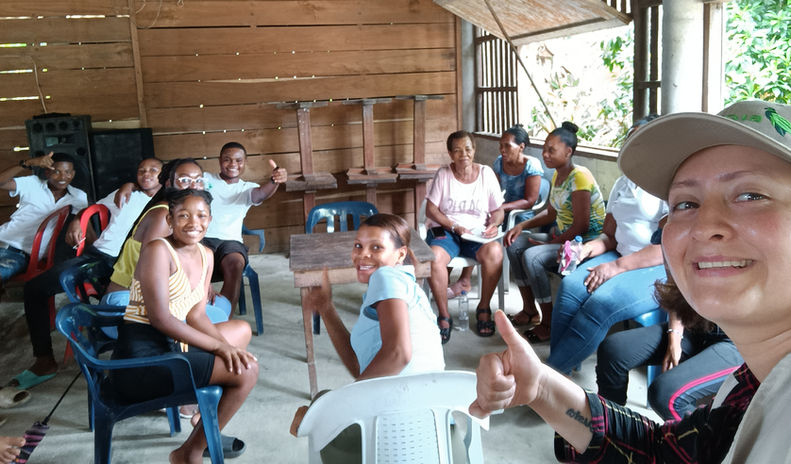


Bajo Baudó Mangroves REDD++ project is located in the Pacific region in the department of Chocó, Colombia. It limits to the north with the municipality of Nuquí , to the south with the municipality of Medio Baudó, to the east with the municipality of Atrato and to the west with the Pacific Ocean. The project area is collectively owned by 5 Community Councils, which are Cuevita (R 2701/Dec 21, 2001), Pavasa (R 2695/Dec 21, 2001), Villa María de Purrichá (R 1129/May 23 , 2000 ) , Virudó (R 2698/Dec 21, 2001) and San Agustín de Terrón (R 3369/Dec 21, 2000). Although the total titled area for the 5 councils is 73,611 ha, the project area is 62,212 ha, which overlaps 51% with the DMRI Encanto de los Manglares del Bajo Baudó Management District, created through the agreement 008 of 2017. The (DRMI) is a Protected Area category that decentralizes the power of the environmental authority and allows decision-making by the communities that inhabit it. With the management of the area, new models of social and environmental territorial management have been created, however there are several challenges in terms of governance and conservation of ecosystems. Through the DMRI declaration, sustainable management agreements have been reached with the communities and joint restoration and monitoring actions have been developed with the participation of other key institutional actors.
The project area overlaps with two important ecosystems, mangrove forest (19.88% of the total project area), with an estimated average reserve of 800 tCO2e/ha, and Basal humid forest (80.12% of the total project area). ), with an estimated average reserve of 604 tCO2e/ha. The drivers of deforestation in the baseline have been caused by the implementation of coconut crops, subsistence crops, crops for illicit use, and livestock; the drivers of degradation have been selective logging, illegal mining, fishing, and indiscriminate housing.
The main objective of the project is: Reduce GHG emissions due to forest degradation and deforestation in the 5 community councils, for the generation and transaction of carbon credits that finance activities that improve the quality of life of the communities and the state of ecosystems.
This objective is expected to be achieved by:
-
Improve the social, cultural and productive infrastructure for the sustainable development of the communities that live in the project area.
-
ethno-development plan fostered governance and rescue of cultural practices within the TC.
-
Strengthen the technical capacities of leaders, youth and women to give long-term sustainability to the project's actions.
-
Design and implement the strategy for restoration, conservation and monitoring of nature, as well as the mechanism for oversight and participatory control in the execution of project actions
In the participatory construction of the benefit distribution system, 38 REDD actions were defined, grouped into 13 programs and 4 strategic lines that are a) sustainable development, b) capacity building, c) governance and culture strengthening, and d) conservation. and monitoring, seeking the achievement of social and environmental objectives, increasing the permanence of carbon reserves over time. The biodiversity conservation actions of the REDD++ project are focused on the objects defined as High Conservation Value (HCV), which are the mangrove ecosystems, the banks of Piangua , Green Turtle ( Chelonia mydas ), and the Carrás ( Huberodendron patinoi ). The social HCVs are the Afro-songs and artisanal fishing, the restoration actions and the participatory monitoring of the mangrove give the project a gold level in the CCB standard. The start date of the project is April 6, 2017 due to the DMRI declaration, from this date, concrete actions for the conservation of ecosystems are developed in the project area.
The life of the project is 30 years where a reduction of emissions due to deforestation of 3,000,000 tCO2e is expected , the methodology used is VM007 and no deviations were made, the project takes into account compliance with social and environmental safeguards, compliance with national legislation and contribution to compliance with the SDGs.

















